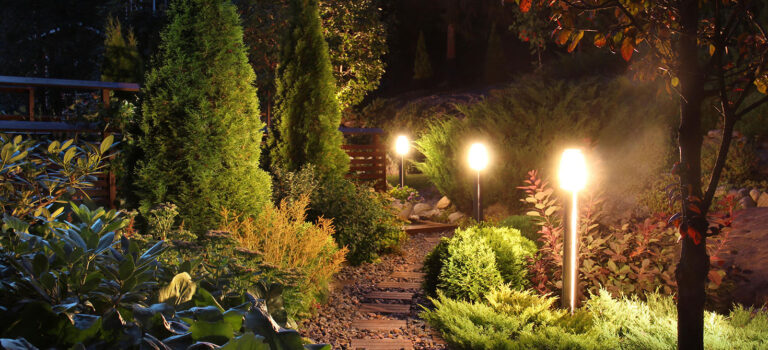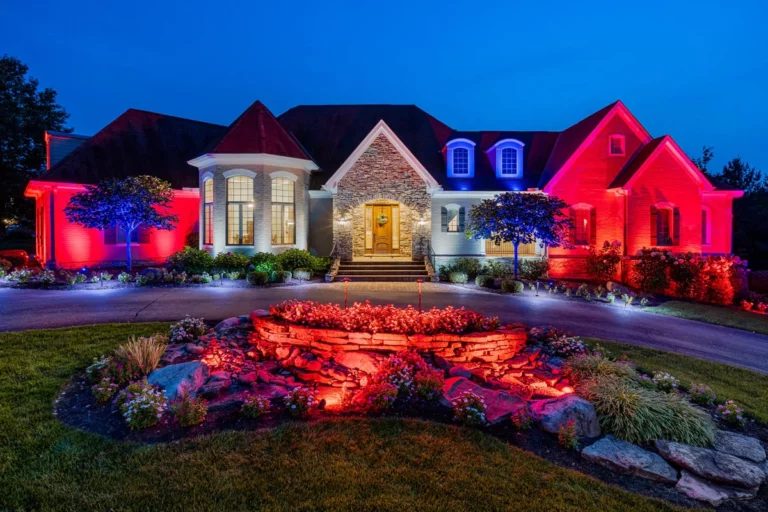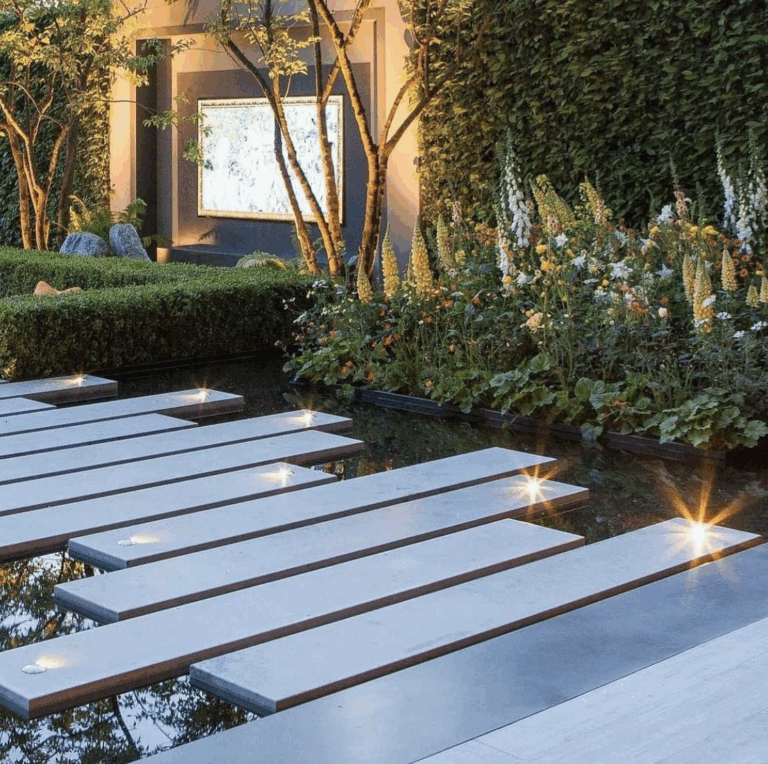Light Landscaping Near Me Expert Guide
Light landscaping near me is a great way to enhance your property’s appeal without overwhelming your budget or time. This guide explores five local landscaping companies specializing in light projects, offering insights into design ideas, maintenance tips, and cost-effective solutions. From small garden design to patio enhancements, we’ll cover everything you need to create a beautiful and low-maintenance outdoor space.
We’ll present a variety of design styles suitable for different property types, including small yards and balconies. Expert advice on choosing low-maintenance plants, incorporating lighting for nighttime appeal, and practical maintenance strategies will be provided. Detailed cost breakdowns and valuable customer testimonials round out this comprehensive guide.
Local Landscaping Services
Finding the right landscaping company for your light landscaping needs can be a challenge. This section provides information on five local companies specializing in small-scale projects, detailing their services, pricing, and expertise to help you make an informed decision.
Local Landscaping Companies
These companies offer a range of light landscaping services, catering to diverse needs and budgets. They excel in smaller-scale projects, providing personalized attention to detail.
- Green Thumb Gardens: (555) 123-4567, www.greentumbgardens.com. They specialize in creating beautiful flowerbeds, installing various plants, and designing small patios. They also handle minor hardscaping like pathways and retaining walls.
- Nature’s Touch Landscaping: (555) 987-6543, www.natures-touch.com. They focus on flowerbed design and installation, patio enhancements with seating areas, and small tree planting. They are particularly adept at integrating natural elements into designs.
- Landscaping Solutions: (555) 555-1212, www.landsol.com. They offer a comprehensive range of light landscaping services, including flowerbed installations with various plant selections, patio design and construction, and small tree and shrub planting.
- The Garden Spot: (555) 111-2222, www.thegardenspot.com. Their specialty is creating charming and functional small gardens. They excel at flowerbed design and installation, patio upgrades with seating arrangements, and minor hardscaping such as walkways.
- Urban Oasis Landscapes: (555) 333-4444, www.urbanoasis.com. Their focus is on creating visually appealing and functional outdoor spaces. Their services encompass flowerbed installation, patio enhancements, and minor hardscaping projects.
Pricing Models Comparison
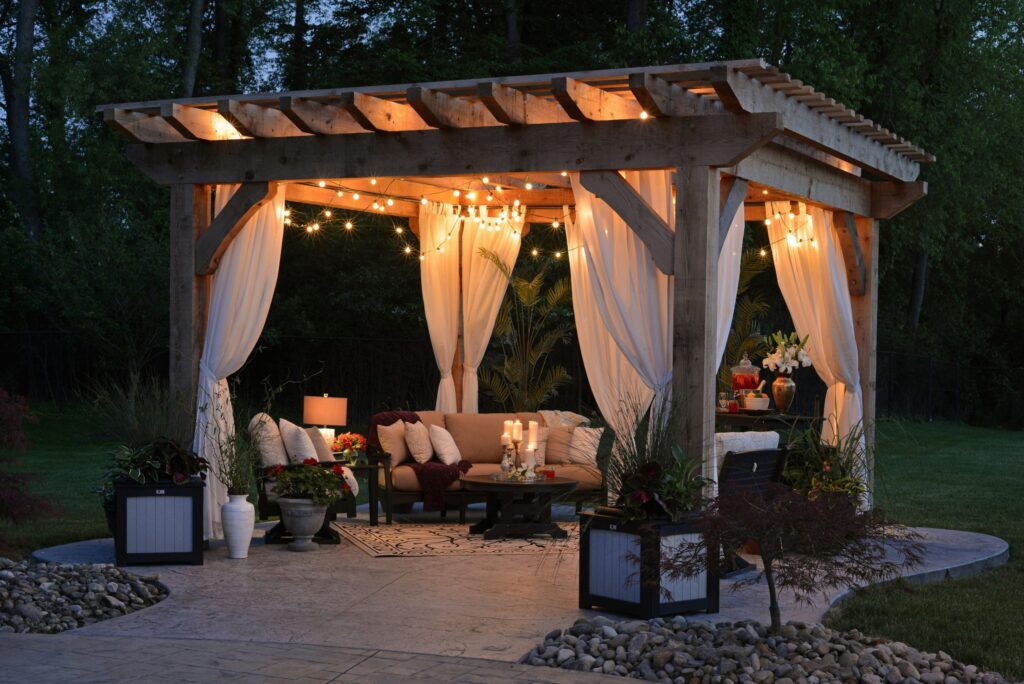
Pricing models vary among these companies. Factors influencing pricing include the scope of the project, the complexity of the design, and the materials used.
Example: A simple flowerbed installation might cost between $500 and $1500, whereas a more elaborate patio design with hardscaping could range from $2000 to $5000. Detailed quotes are usually provided upon consultation.
Company Expertise Comparison
The following table summarizes the expertise of each company in various aspects of light landscaping.
| Company Name | Flowerbed Expertise | Patio Expertise | Small Tree Planting Expertise |
|---|---|---|---|
| Green Thumb Gardens | High | Medium | Low |
| Nature’s Touch Landscaping | High | High | Medium |
| Landscaping Solutions | Medium | Medium | Medium |
| The Garden Spot | High | Low | Low |
| Urban Oasis Landscapes | Medium | High | Medium |
Light Landscaping Design Ideas: Light Landscaping Near Me
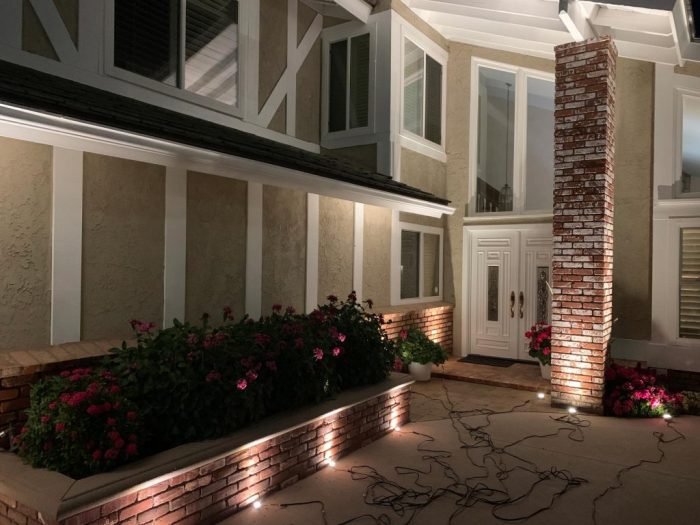
Source: innovativelightdesigns.com
Light landscaping offers a visually appealing and low-maintenance approach to enhancing outdoor spaces. It’s ideal for creating serene and inviting environments, whether you have a sprawling yard or a compact balcony. Careful consideration of plant choices, lighting, and design styles can transform any outdoor area into a beautiful and functional extension of your home.
Various styles of light landscaping are suitable for diverse property types. Proper selection of plants and design elements ensures that the landscaping complements the overall aesthetic of the property while minimizing upkeep. Choosing low-maintenance plants is crucial for light landscaping projects, reducing the time and effort required for upkeep.
Styles of Light Landscaping
Different property types benefit from varying landscaping styles. Small yards, balconies, and patios each require tailored approaches to achieve the desired aesthetic. Understanding these nuances ensures the design is both beautiful and functional for the space.
- Small Yards: A minimalist approach is ideal for small yards. Consider using compact shrubs and groundcovers that can be easily maintained. The use of vertical elements, such as climbing vines or trellises, can add visual interest without taking up excessive horizontal space.
- Balconies: Balconies benefit from container gardening. Choose compact flowering plants and herbs that thrive in containers. Consider using hanging baskets or wall-mounted planters to maximize vertical space and create a layered effect.
- Patios: Patios lend themselves well to low-maintenance groundcover plants. Combine these with strategically placed potted plants and shrubs for visual interest and texture. Consider incorporating pathways using decorative stones or pavers to delineate different areas within the patio space.
Low-Maintenance Plants and Flowers
Low-maintenance plants are essential for light landscaping projects. They require less watering, pruning, and fertilization, significantly reducing the time and effort needed for upkeep. Choosing the right plants is crucial for a beautiful and sustainable landscape.
- Groundcovers: Creeping phlox, thyme, and vinca minor are excellent groundcovers that spread quickly to cover the ground, providing a dense and aesthetically pleasing surface. They are relatively low-maintenance, requiring minimal watering and care.
- Shrubs: Dwarf varieties of shrubs, such as dwarf hollies or azaleas, are perfect for small spaces. These compact shrubs offer a variety of textures and colors without requiring extensive pruning or maintenance.
- Succulents: Succulents are drought-tolerant and require minimal watering, making them ideal for arid climates or areas with limited access to water. They come in a wide range of shapes, sizes, and colors, adding visual appeal to the landscape.
Design for a Small Patio Area
This design focuses on a small patio area, highlighting low-maintenance options and color palettes.
| Plant | Color Palette | Materials |
|---|---|---|
| Sedum (various varieties) | Grey-green, silvery-grey | Potted planters in terracotta or grey |
| Dwarf rosemary | Green-grey, light purple | Stone pathway edging |
| Creeping thyme | Green-grey, silvery | Wooden trellises for climbing plants |
The color palette focuses on muted tones, creating a calming and harmonious atmosphere. The use of various shades of green and grey, complemented by silvery accents, provides a sophisticated yet relaxed feel. The materials are chosen for durability and aesthetic appeal. Using a mix of terracotta and grey planters provides visual interest while enhancing the design’s overall aesthetics.
Incorporating Lighting for Nighttime Ambiance
Strategic use of lighting enhances the beauty of light landscaping at night. Choosing the right type of lighting is crucial for creating a welcoming and aesthetically pleasing nighttime environment.
- Pathways: Solar-powered pathway lights along walkways illuminate the path, ensuring safety and guiding visitors. They are also aesthetically pleasing, creating a welcoming ambiance.
- Spotlights: Spotlights can highlight specific plants or architectural features, drawing attention to key elements of the design. This accentuates the beauty of the landscape after dark.
- String Lights: String lights can be draped over trellises or incorporated into the design for a softer, more intimate lighting experience. They provide a warm, inviting glow, ideal for creating a relaxing atmosphere.
Maintenance and Care for Light Landscaping
Maintaining a vibrant and healthy light landscaping design requires consistent care and attention. Proper maintenance ensures your plants thrive, minimizing disease and pest issues, and maximizing the beauty of your outdoor space. This involves understanding the specific needs of your chosen plants and implementing a regular schedule for tasks like watering, weeding, and pruning.
A well-maintained light landscaping design not only enhances the visual appeal of your property but also contributes to a healthier environment for the plants themselves. By addressing issues like pests and weeds promptly, and implementing appropriate watering techniques, you create an optimal growing environment, encouraging lush growth and preventing stress-related issues.
Basic Maintenance Requirements for Common Plants
Understanding the unique needs of your chosen plants is paramount to successful light landscaping. Different plants have varying requirements for sunlight, water, and soil composition. Researching the specific needs of each plant is essential for its overall health and well-being. For instance, some plants thrive in full sun, while others prefer partial shade. Understanding these factors allows you to select the right plants for your location and maintain a thriving landscape.
Weed Management in Light Landscaping
Regular weed removal is crucial for maintaining a healthy and visually appealing light landscaping. Weeds compete with desirable plants for resources, including water, nutrients, and sunlight. Consistent removal prevents weed proliferation, which can significantly impact the health and aesthetic appeal of your light landscaping. Manual removal, mulching, and targeted herbicide applications are all viable methods for effective weed control. Consider pre-emergent herbicides for proactive weed prevention.
Watering Schedules and Techniques
Proper watering is essential for the health of your light landscaping plants. Overwatering can lead to root rot, while underwatering can cause wilting and stress. A thoughtful watering schedule tailored to your specific plant types is crucial. Consider the type of soil, the amount of sunlight, and the plant’s water needs to determine the frequency and depth of watering. Watering deeply and less frequently promotes healthy root development.
Pruning and Shaping Shrubs and Flowers
Pruning is an essential part of maintaining the shape and health of shrubs and flowers in a light landscaping project. Regular pruning helps to remove dead or diseased wood, control plant size, and encourage new growth. The timing and method of pruning will vary depending on the type of plant. Proper pruning techniques promote a balanced and aesthetically pleasing design, encouraging healthy growth and reducing the risk of disease. For example, roses require specific pruning times to promote flowering. A systematic approach to pruning, along with understanding your plants’ growth patterns, is key.
- Identify the specific plant type and its growth characteristics, including mature size and pruning requirements. Different plant types respond to pruning differently. Researching the plant’s specific needs is crucial.
- Assess the overall shape and size of the shrub or flower. Determine the desired shape and make adjustments to maintain it.
- Use sharp, clean pruning tools to minimize the risk of disease transmission and to ensure clean cuts.
- Remove dead, damaged, or crossing branches. This promotes healthy growth and enhances the plant’s overall structure.
- Prune to maintain the desired shape and size. This can involve shaping the plant into a specific form or controlling its overall growth.
- Follow up with appropriate plant care. This might involve fertilization, watering, or other methods that encourage new growth.
Budgeting for Light Landscaping Projects
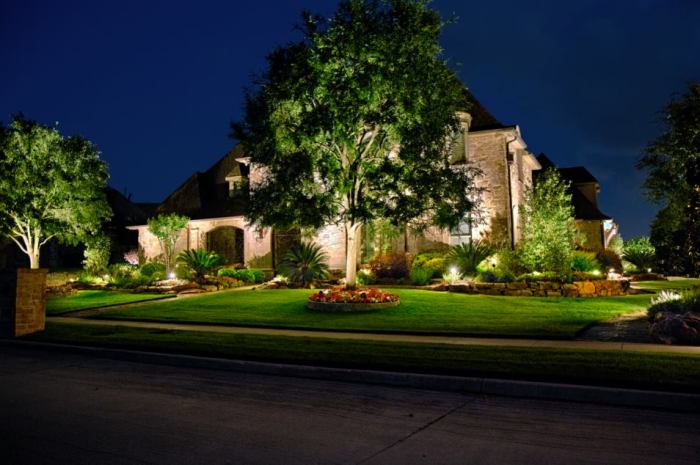
Source: vosslandscapelighting.com
Planning a light landscaping project requires careful budgeting to ensure the project stays within desired financial parameters and achieves the desired aesthetic. A well-defined budget helps avoid costly surprises and allows for adjustments based on the project’s progress. This section details the process of budgeting for a light landscaping project, including estimating material and labor costs, and exploring cost-saving strategies.
A detailed budget is crucial for a successful light landscaping project. This allows for realistic expectations, informed decision-making, and a smooth execution process. Understanding the various cost components helps in prioritizing and allocating resources effectively.
Estimating Material Costs
Materials are a significant component of light landscaping projects. Accurate estimation ensures sufficient funds are allocated for procuring the necessary items. Different materials have varying costs, which is crucial to consider when formulating a budget. Factors like quantity, quality, and availability influence the final cost.
- Plants: Plant costs vary widely depending on species, size, and quantity. A single small shrub might cost a few dollars, while a mature specimen could cost several hundred dollars. Wholesale nurseries and local gardening centers offer price comparisons. Considering the long-term aesthetic value and the maintenance needs of different plants will influence the overall project budget.
- Soil: Soil amendments like compost or topsoil are essential for plant health and growth. The cost depends on the type and quantity required. Local suppliers and gardening centers provide detailed cost information, including bulk purchase discounts.
- Mulch: Mulch is used to retain moisture, suppress weeds, and enhance the appearance of landscaping. Different types of mulch, such as wood chips, bark, or gravel, have varying costs. The amount required will significantly impact the final cost.
Estimating Labor Costs
Labor costs for light landscaping projects are determined by the scope of work. Hiring a landscaper for tasks like planting, mulching, or installing small features will increase the overall project budget. Factors like the experience level of the labor, the complexity of the tasks, and the duration of the project affect the cost.
- Planting: Planting trees, shrubs, and flowers requires skilled labor. The labor cost is often dependent on the size and type of plants, as well as the complexity of the planting location. A professional landscaper may charge by the hour or by project.
- Installation: Installing small features like retaining walls or decorative elements involves labor costs. The complexity of the installation and the required materials will influence the final price.
- Maintenance: Ongoing maintenance, such as weeding or pruning, can be factored into the initial budget, particularly for larger projects.
Cost-Saving Strategies
Several cost-saving strategies can help reduce expenses while maintaining project quality. These strategies allow for a balance between cost and desired aesthetics.
- Choosing appropriate plants: Selecting native or drought-tolerant plants can reduce long-term maintenance costs. These plants often require less water and less frequent care, lowering the overall expenses.
- Bulk purchasing: Purchasing materials in bulk, such as mulch or soil, can result in significant discounts, especially for larger projects.
- DIY tasks: Simple tasks, like installing mulch or weeding, can be done by the homeowner to reduce labor costs.
Sample Budget
A sample budget for a light landscaping project focusing on adding shrubs and mulch to a small garden bed.
| Item | Estimated Cost |
|---|---|
| Plants (3 shrubs) | $150 |
| Soil amendments | $50 |
| Mulch | $75 |
| Labor (planting & mulching) | $100 |
| Total | $375 |
Material Cost Comparison
The table below compares the cost of different landscaping materials from various suppliers. Note that prices may vary depending on location and supplier.
| Material | Cost (per unit) | Supplier |
|---|---|---|
| Topsoil (cubic yard) | $25 | Local Garden Center |
| Wood chips (cubic yard) | $30 | Local Supplier |
| Shrubs (medium size) | $50 | Wholesale Nursery |
Customer Reviews and Testimonials
Customer reviews are invaluable when choosing landscaping services. They provide firsthand accounts of a company’s work, professionalism, and overall customer experience. These insights offer a clear perspective beyond marketing materials, helping potential clients make informed decisions. Trustworthy reviews from satisfied customers are powerful indicators of a company’s reliability and quality of service.
Importance of Customer Reviews

Customer reviews act as a vital source of information for prospective clients. They offer insights into the company’s performance, reliability, and the overall client experience. Positive reviews often highlight aspects like timely service, excellent communication, and the quality of the completed work. Negative reviews, while potentially challenging, provide crucial feedback for improvement and highlight areas where the company might need to enhance its services.
Examples of Positive Customer Reviews
Positive reviews offer valuable insights into the quality of work and service provided. Here are some examples, showcasing different aspects of positive experiences:
- “I was incredibly impressed with the professionalism of the team at Local Landscaping. They were punctual, efficient, and meticulously cleaned up after their work. The new landscaping design exceeded my expectations; the garden is stunning!”
- “We’ve been using Local Landscaping for years, and they consistently deliver. Their communication is superb, and the team is always friendly and respectful. The quality of their work is exceptional, and our yard looks beautiful. Highly recommended!”
- “The team at Local Landscaping expertly handled a challenging project for us. They were adaptable to our changing needs and kept us informed throughout the entire process. We’re thrilled with the results; our yard is now a vibrant oasis.”
Finding Reviews and Testimonials Online, Light landscaping near me
Several online platforms allow access to customer reviews. These platforms often feature detailed reviews and testimonials, offering a comprehensive overview of the services provided. Examples of platforms include:
- Google My Business: Many local businesses, including landscaping companies, have profiles on Google My Business. Searching for the company name on Google often displays customer reviews.
- Yelp, Angie’s List, and similar platforms: These platforms are dedicated to gathering and displaying customer reviews. You can search for landscaping companies in your area to find customer testimonials.
- Company Websites: Some landscaping companies feature testimonials directly on their websites. These testimonials are often prominently displayed to build trust and credibility.
Creating a Positive Review
A positive review can be a powerful tool for highlighting a company’s strengths. Providing specific details about the experience is key. Here is a sample template:
| Category | Content Example |
|---|---|
| Company Name | Local Landscaping Services |
| Project Description | New flowerbed installation and patio design |
| Positive Aspects | Excellent communication, prompt service, beautiful design, professional team. |
| Overall Rating | 5 out of 5 stars |
| Specific Comments | The team was punctual, friendly, and extremely detail-oriented. The final product exceeded our expectations. |
Final Review
In conclusion, achieving a beautiful light landscaping project starts with careful research and planning. By understanding the services offered by local companies, exploring design ideas, and mastering maintenance techniques, you can transform your outdoor space without breaking the bank. This comprehensive guide equips you with the knowledge and resources to make informed decisions and create a stunning outdoor oasis. Remember to consider your budget, property type, and desired aesthetic when making choices. Happy landscaping!

